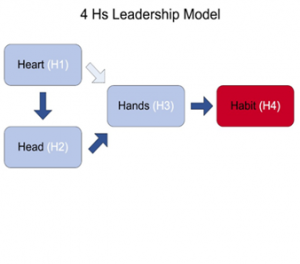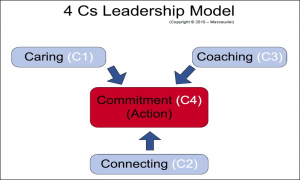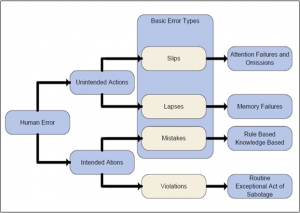Discuss the Safety Aspects of the Job
Typical questions to ask include:
- “Did you carry out a pre-task hazard assessment?”
- “What are the hazards associated with this job?”
- “What risk assessment process did you use before starting this job?”
- “What is the safety issues associated with this job?”
- “What preparation did you do to help you do this job safely?”
- “For this particular job, do you require any special PPE?”
Note: this is a critical step in the safety interaction. It should take the form of a natural two-way conversation (caring, engaging, communicating, connecting and coaching) and not a rigid question-and-answer session. Most importantly, remember to praise the employee for good safety practices – acknowledgement, recognition and positive feedback are essential elements in the safety interaction. Following are some examples of positive feedback:
Examples:
- “I notice that you’ve do ne a very comprehensive risk assessment. That’s great.”
- “That’s a good safety practice. Thanks for working safely.”
- “You’re wearing all the required PPE and it’s all in good shape. You set a nice example for the other welders.”
- “I see you’ve identified that in your risk assessment. That’s good.”
- “I like the way you ….. That’s a good idea.”
Positive feedback is a powerful tool for reinforcing safe behaviour. Remember that – to have the right impact – praise and positive feedback should always be sincere and genuine.
Besides the immediate feedback given during the safety interaction, there can also be further positive feedback (e.g. through publishing names and positive incidents in bulletins, and giving awards) where appropriate.
- Ask for Safety Improvement Suggestions
- Although the employee is working safely, it is important – in the context of continuous improvement – to explore ways of making the job and work environment even safer. Typically, this will commence by asking the employee for safety improvement suggestions. Often, the leader will then add his/her own insights and knowledge, thus making the improvement suggestions even more powerful.
- Once again, positive feedback (“I think that’s an excellent suggestion!”) can play a very important role.
Note: Complacency is one of the “big sins” of safety. Even if we have a “good” safety record, we should never be satisfied with our safety performance – in line with our goal of achieving Zero fatalities, we should always strive for further improvement. This is one of the important messages that need to be conveyed during the VFL process.
Safety Intervention
Stop the Activity in a Safe Manner
You have observed that the employee is working unsafely; following from this, your immediate task – as a safety leader – is to stop the activity in a safe manner. For example, the employee may be climbing down a flight of stairs with a huge and heavy box in his hands, and the size and shape of the box is such that it is severely obstructing his/her vision. Shouting loudly to the person from a distance may cause him/her to get a fright, and then drop the box on the feet, with potentially dangerous consequences – this, clearly, would not be the right thing to do. General guidelines in a situation such as this would be:
- As the safety leader, ensure that any action on your part does not make the situation more unsafe.
- Make sure that you – unwittingly – do not release the safety hazard.
- Conduct a rapid, yet thorough, risk assessment, and then act quickly to stop the unsafe act.
- Any actions on your part should not give the employee a fright, startle or throw him/her off balance. In other words, do not introduce an element of surprise.
- The leader’s tone of voice (calm yet deliberate), and specific actions to assist the employee, are very important.
In the above example the safety leader would approach the employee, catch his/her attention in a calm and non-surprising way and say something like: “I’m sure you can’t see where you are going – let me help you put the box down.” The focus will then be on assisting the employee to put the box down on the (level) ground in a safe manner.
Brief Introductions; Identify What the Employee was Doing Unsafely
Introduce yourself (briefly) if you don’t know the employee – “Hello, I’m John Smith, the new Engineering Manager ….. and you are?” The employee will then respond by saying (for example): “I am Brian Adams. I’ve just joined the mine as an apprentice boilermaker.”
- These introductions should not be long and drawn out. The idea is to get to the identification of– and discussion about – the unsafe act as soon as possible.
- The leader is usually tempted to immediately point out what the employee was doing unsafely. Rather, ask the employee what he/she thinks he/she was doing unsafely – in terms of the learning that takes place, and the embedding of that learning, this approach has a greater impact. A short discussion will then take place. Most importantly, at the end of this discussion it should be very clear to the employee what he/she was doing unsafely.
- Note that the tone of the safety intervention needs to be firm and forceful, with the leader conveying a strong message about safety. Importantly, it should not be too friendly (smiling, grinning from the leader) as this will dilute the seriousness of the safety message, and the learning that takes place. Equally important, the leader should not adopt an aggressive or threatening tone – this will not achieve the desired result. Even though the employee was working in an unsafe way, the leader should still deal with the employee in a respectful, professional and positive manner.
- Leader: “If you lost the use of an eye, or both eyes for that matter, what could possibly happen to you?”
- Employee: “I may lose my job – that’s what happened to my cousin. I will no longer be able to earn a living. It’s not a very nice picture.”
- Leader: “And what would that mean?”
- Employee: “I am no longer able to support my family. That would be disastrous.”
In the above example, the leader got the employee to realise the consequences of not wearing safety spectacles – he made the impact direct and personal, and this had the desired effect.
After discussing with the employee the possible consequences of the unsafe act, one needs to discuss safer ways to do the job.



